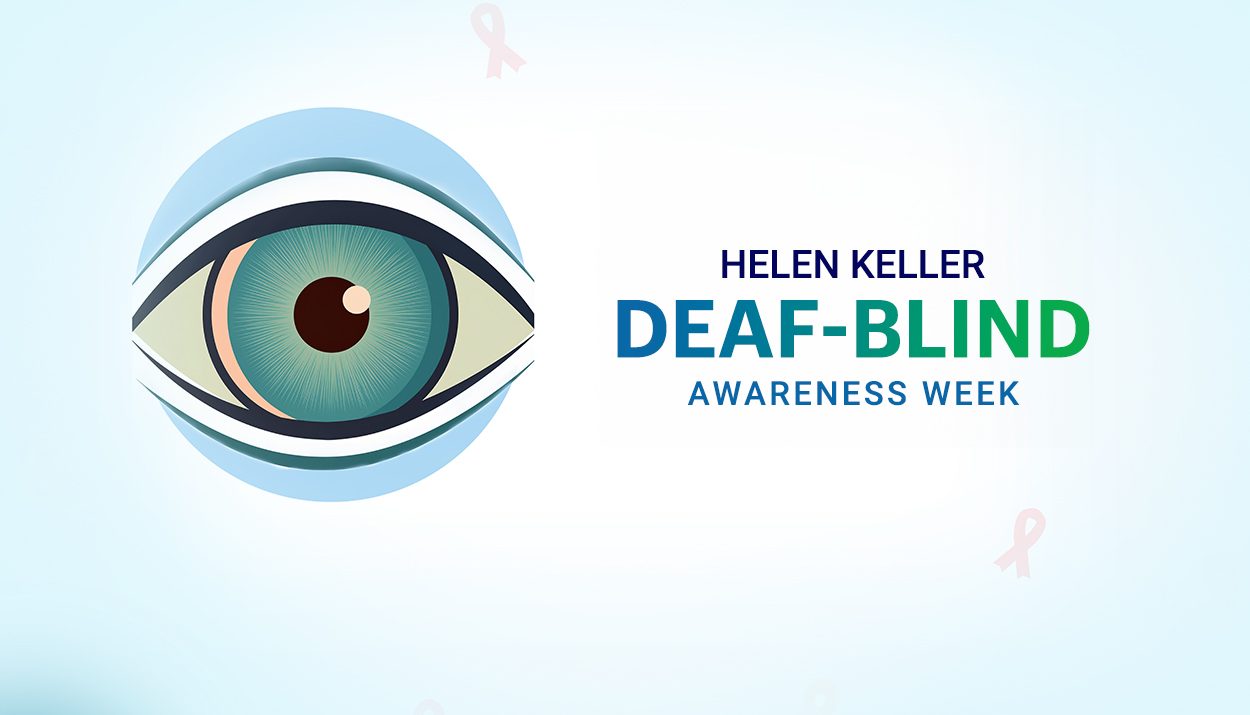“Although the world is full of suffering, it is also full of the overcoming of it.” – Helen Keller.
Often hailed as a symbol of the indomitable human spirit, Hellen Keller, the iconic American memoirist and lecturer, inspired millions—paving the way for technology for the the deaf-blind.
Rendered deaf and blind by Scarlett fever at the age of 19, Keller’s relentless determination, fueled by the guidance of her teacher, Anne Sullivan, enabled her to break through the barriers of silence and darkness. She went on to become a renowned author and a towering activist dedicated to improving the lives of disabled people around the world.
The Hellen Keller Deaf-Blind Awareness Week, observed from June 25 to July 1, honors her legacy and shines a spotlight on the unique challenges faced by individuals who are both deaf and blind. It also underscores the importance of fostering a more inclusive society where everyone has the opportunity to thrive.
UNDERSTANDING THE UNIQUE CONDITION OF DEAF-BLINDNESS
Deaf-blind individuals struggle to communicate, access information, and interact with the world. The dual sensory impairment affects them in different ways. Some might have partial hearing and vision, while others might be completely deaf and blind. This variability means that each person with deaf-blindness has unique needs and experiences.
To put this into perspective, it’s estimated that approximately 0.2% of the global population is deaf-blind. It may seem small, but it translates to millions of people worldwide. In the U.S. alone, over 70,000 individuals are affected by deaf-blindness.
Beyond the practical challenges of communication, mobility, and accessibility, there are profound social and emotional impacts. Isolation and loneliness can be common, as the barriers to communication and interaction make it difficult to form and maintain relationships. Acknowledging these hardships can help us better support their journey toward independence and integration into society.
EVOLUTION OF ASSSISTIVE TECHNOLOGY FOR THE DEAF-BLIND
From the tactile writing system developed by Louis Braille in the 19th century to the emergence of speech-to-text software, the journey of assistive technology for deaf-blind individuals has been marked by remarkable ingenuity and resilience. Early communication and education methods laid the foundation for today’s advanced tools, but recent advancements in assistive technology have further opened up the world for the deaf-blind.
Enhancing Communicative Capabilities with Assistive Devices
Effective communication is a cornerstone of independence and connectivity for deaf-blind individuals. Several innovative devices have been developed to bridge the communication gap:
Refreshable Braille Displays: These dynamic devices connect to computers and smartphones, converting on-screen text into Braille in real-time. They empower users to read emails, browse the internet, and access digital content independently.
Screen Readers and Text-to-Speech Software: Screen readers like JAWS (Job Access With Speech) and NVDA (NonVisual Desktop Access) convert text displayed on a screen into speech or Braille. Text-to-speech software reads aloud digital text, enabling users to consume information, perform tasks, and communicate effectively.
Improving Freedom of Movement with Advanced Mobility Aids
Navigating the world without sight and sound requires specialized tools to ensure safety and independence:
White Canes with GPS Technology: Advanced white canes equipped with GPS provide real-time navigation assistance. These canes can guide users through complex environments, offer directions, and alert them to nearby obstacles.
Wearable Devices with Obstacle Detection: Wearables like the Sunu Band use ultrasonic waves to detect objects in the user’s path, providing haptic feedback to help avoid collisions. These devices enhance spatial awareness and mobility.
Smart Glasses: Devices like Aira smart glasses offer visual information through a live agent who describes the user’s surroundings. Other smart glasses provide auditory or haptic feedback to aid navigation and environmental interaction.
Elevating the Quality of Life with Innovative Daily Living Aids

Assistive technology has made everyday tasks more manageable for individuals who are deaf-blind, enhancing their autonomy:
Smart Home Devices: Voice-controlled assistants like Amazon Alexa and Google Home can be integrated with tactile and auditory feedback systems. These devices allow users to control lighting, thermostats, and appliances, making their homes more accessible and comfortable.
Specialized Kitchen Appliances: Kitchen gadgets with tactile and audio feedback enable safer and more efficient cooking. For example, talking microwaves, tactile markers on stovetops, and Braille labels on appliances facilitate independent meal preparation.
Signifying Education and Employment Tools
Access to education and employment is crucial for the personal and professional growth of individuals who are deaf-blind:
Online Learning Platforms: Educational platforms like Khan Academy and Coursera have integrated accessibility features, including screen reader compatibility and captioning, making online learning more inclusive.
Job-Related Assistive Technologies: Tools such as Braille notetakers allow users to take notes and read documents in Braille, and accessible workstations equipped with screen readers and speech recognition software help individuals perform their duties effectively.
These assistive technologies for the deaf-blind enable them to communicate, navigate, and engage with the world around them more independently. These tools enhance daily living and open up new opportunities for education and employment, fostering a more inclusive society.
THE NEXT GENERATION OF ASSISTIVE TECH
The future of assistive technology for deaf-blind individuals is brimming with exciting possibilities. Research and development in the field are yielding groundbreaking innovations. Wearable haptic devices, for instance, are being designed to translate visual and auditory information into tactile feedback, enabling users to “feel” their surroundings.
Despite these advancements, several challenges and opportunities need to be addressed. Ensuring assistive technologies are accessible and affordable is crucial. Many high-tech devices are expensive, putting them out of reach for those who need them most. Efforts must be made to reduce costs and increase funding for assistive technology programs. Additionally, designing devices that are user-friendly and adaptable to various needs is essential for widespread adoption.
Numerous organizations, such as the Helen Keller National Center, the American Association of the Deaf-Blind, and Sense International, are dedicated to supporting the deaf-blind community. These organizations offer resources, advocacy, and research funding to enhance accessibility and quality of life. Staying informed and actively participating in these efforts can significantly impact the lives of deaf-blind individuals,
This Hellen Keller Deaf-Blind Awareness Week, let us all take inspiration from the woman who defied limitations to ignite a revolution for the disabled and do our best to help them lead more independent and fulfilling lives.
If you are an HCP interested in contributing to such advancements in healthcare, join MDForLives. The platform offers opportunities to participate in paid medical surveys aligned with your expertise.
Share your insights, case studies, and articles at collaboration@mdforlives.com to contribute to the dialogue on the latest assistive technologies in healthcare and earn exclusive rewards!
A. Royden D’Souza is a professional writer with over 5 years of experience in the healthcare industry. He holds an engineering degree and has worked with several brands to meet their content requirements. He is passionate about writing engaging content for healthcare professionals, allied healthcare professionals, and nurses.



